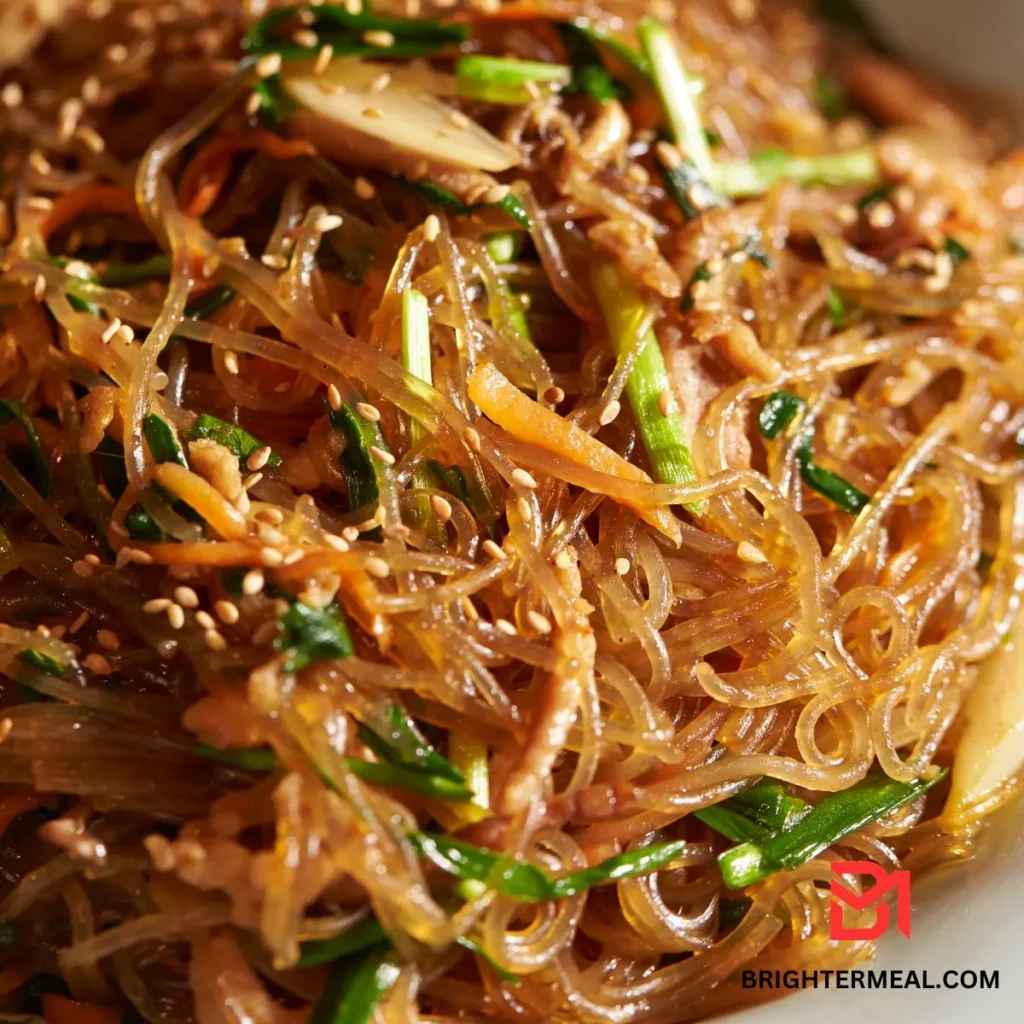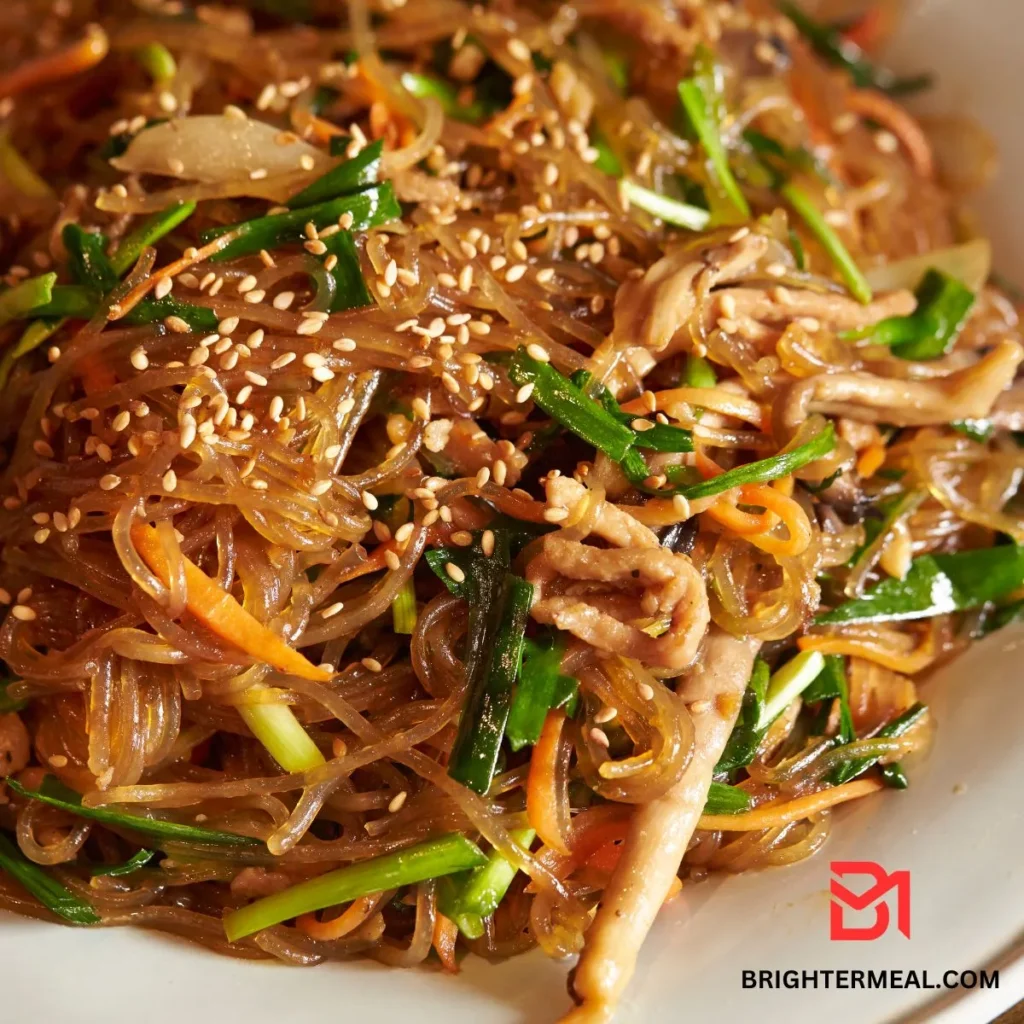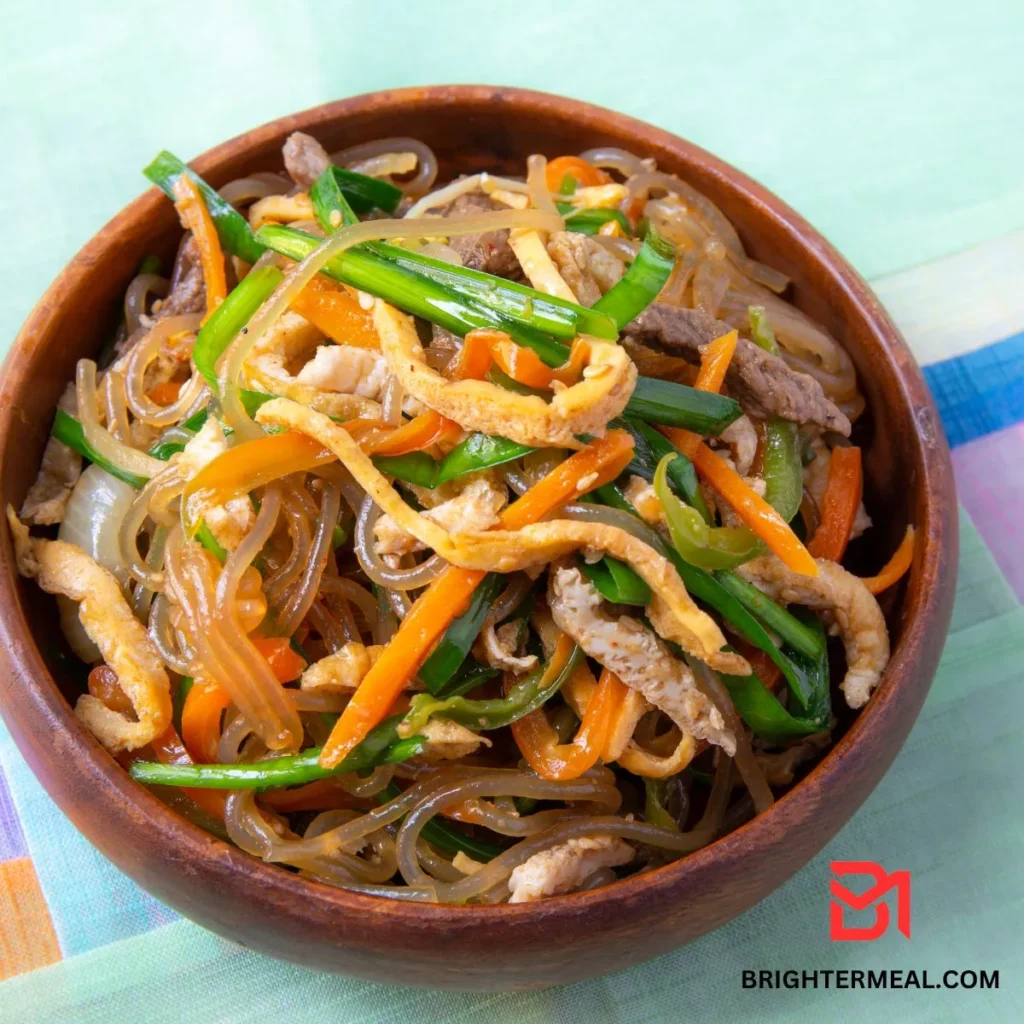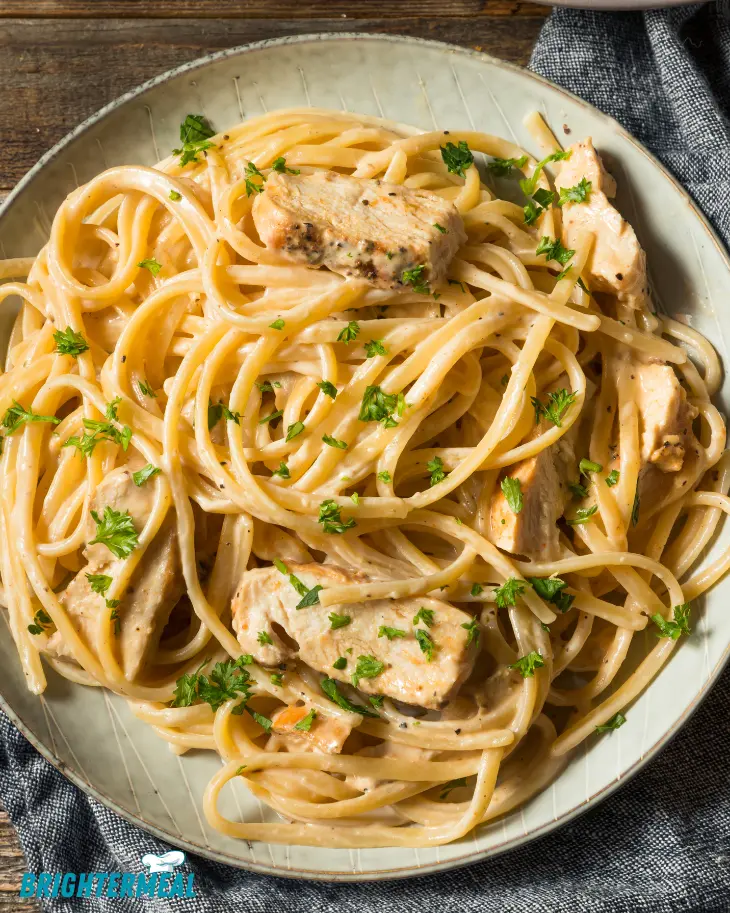Easy Japchae (Korean Stir-Fried Glass Noodles)
Crafted from resilient sweet potato starch noodles, Japchae stands as a beloved classic enjoyed by all! Discover the secrets to preparing authentic and delicious Japchae with this tried-and-true recipe, cherished by readers around the globe!

What is Japchae?
In essence, Japchae can be likened to the Korean counterpart of Chinese Chow Mein, a dish you likely already enjoy. However, the key distinction lies in the use of sweet potato glass noodles. This particular noodle dish presents a delightful blend of sweet and savory flavors that are sure to delight your taste buds!

How to make japchae
Noodles:
Sweet potato starch noodles, also known as dangmyeon, hold a revered place in Korean households. These versatile noodles are a pantry essential, not only for crafting the iconic Japchae but also for enhancing soups and stews.

When it comes to preparing Japchae noodles, there are various methods employed by different cooks. Some opt to presoak the noodles before cooking, while others skip the rinsing step post-cooking. Even the instructions on the noodle packaging can vary depending on the brand. Personally, I find presoaking unnecessary as these noodles cook quickly without it.
Meat and Vegetables:
For the meat component, lean and tender beef is my preferred choice, although pork loin is also widely used in Japchae. As for vegetables, the classic additions include carrots, spinach, mushrooms, onions, and scallions. Additional options such as chili peppers, bell peppers, garlic chives, and cucumbers are commonly incorporated.

Though I’ve streamlined the process by cooking some ingredients together for efficiency, it’s crucial not to overcook the vegetables. They should retain a slight crunch, perfectly complementing the soft noodles.
Seasonings:
This recipe ensures that delicate equilibrium! Should you opt to adjust ingredient quantities, remember to proportionately increase the sauce accordingly. If available, I recommend using brown sugar for its color and added depth of flavor.
Creating a bowl of sauce beforehand simplifies the cooking process, ensuring a seamless infusion of flavors throughout.

Exploring the Origins of Japchae: A Culinary Legacy
The Cultural Significance of Japchae
Beyond its gastronomic appeal, Japchae holds significant cultural importance in Korean society. Often served during celebratory occasions such as weddings, birthdays, and holidays, Japchae symbolizes prosperity, longevity, and harmony.

Deconstructing the Components of Japchae: A Symphony of Ingredients
Sweet Potato Glass Noodles (Dangmyeon)
At the heart of Japchae lies the distinctive sweet potato glass noodles, known as dangmyeon, which impart a chewy texture and absorb the savory flavors of the dish. Made from sweet potato starch, these translucent noodles offer a gluten-free alternative and serve as a nutritious source of carbohydrates.
Savory Protein Additions: Elevating the Flavor Profile
To elevate the flavor profile of Japchae, various protein options can be incorporated, such as thinly sliced beef, chicken, or tofu. Marinated in a blend of soy sauce, sesame oil, and garlic, these protein additions infuse the dish with savory notes and complement the natural sweetness of the noodles and vegetables.
Sesame Seeds and Scallions: Garnishing with Flair
A final flourish of toasted sesame seeds and finely chopped scallions adds depth and aroma to Japchae, creating a sensory experience that delights both the palate and the senses. These garnishes not only enhance the visual presentation of the dish but also impart a nutty richness and freshness to each bite.

Step-by-Step Preparation
1: Prepare the Ingredients
Gather all the necessary ingredients, including sweet potato glass noodles, assorted vegetables, protein of choice, sesame seeds, scallions, and seasonings such as soy sauce, sesame oil, and garlic. Rinse and chop the vegetables, thinly slice the protein, and soak the noodles in warm water until softened.
2: Cook the Components
In a large skillet or wok, heat sesame oil over medium-high heat and sauté the vegetables and protein until tender and lightly caramelized. Add the soaked noodles to the skillet and stir-fry until fully cooked, ensuring that each ingredient is evenly coated with the flavorful sauce.
3: Season and Garnish
Season this recipe with soy sauce, garlic, and additional sesame oil to taste, adjusting the seasoning according to personal preference. Garnish the dish with toasted sesame seeds and chopped scallions, adding a final flourish of flavor and visual appeal.
4: Serve and Enjoy
Transfer the Japchae to a serving platter and garnish with extra sesame seeds and scallions for an added touch of elegance. Serve hot as a standalone dish or as part of a traditional Korean meal, accompanied by steamed rice and assorted side dishes.

Conclusion: Indulge in the Irresistible Delights of Japchae
In conclusion, Japchae stands as a shining example of Korean culinary excellence, offering a symphony of flavors, textures, and colors that captivate the senses and delight the palate. By mastering the art of Japchae, you can embark on a culinary adventure that celebrates the rich heritage and vibrant culture of Korea, one delectable bite at a time.

Japchae (Korean Stir-Fried Glass Noodles)
Ingredients
- Sweet potato glass noodles dangmyeon: 200g
- Beef sirloin or tenderloin, thinly sliced: 150g
- Spinach: 100g
- Carrots julienned: 1 medium
- Onion thinly sliced: 1 medium
- Bell peppers red, green, or yellow, thinly sliced: 1 medium
- Shiitake mushrooms thinly sliced: 4-5
- Wood ear mushrooms soaked and thinly sliced: 1/2 cup
- Soy sauce: 5 tbsp
- Sesame oil: 2 tbsp
- Garlic minced: 2 cloves
- Sugar: 2 tbsp
- Sesame seeds: 1 tbsp
- Scallions chopped: 2-3
- Salt and pepper: To taste
- Vegetable oil: For cooking
Instructions
Cook the noodles:
- Boil the sweet potato glass noodles for about 8 minutes until soft and elastic.
- Rinse in cold water, drain well, and set aside.
Prepare the beef:
- Marinate the sliced beef with 1 tbsp soy sauce, 1 tsp sesame oil, 1 tsp sugar, and minced garlic. Let it sit for 15 minutes.
Cook the spinach:
- Blanch the spinach in boiling water for 1 minute.
- Rinse with cold water, squeeze out excess moisture, and set aside.
Cook the vegetables:
- Heat a bit of vegetable oil in a large skillet over medium-high heat.
- Sauté the carrots, onions, bell peppers, shiitake mushrooms, and wood ear mushrooms separately until tender. Season each with a pinch of salt.
Cook the beef:
- In the same skillet, cook the marinated beef until browned and cooked through.
Combine and season:
- In a large bowl, combine the cooked noodles, beef, spinach, and all the sautéed vegetables.
- Add the remaining soy sauce, sesame oil, and sugar. Toss everything together until well mixed.
Garnish:
- Sprinkle with sesame seeds and chopped scallions.
Serve:
- Transfer to a serving dish and enjoy warm or at room temperature.
Notes
Nutrition
Other Asian Noodle Recipes
- Chicken Fried Rice
- The Best Beef Stir Fry Recipe
- Simple Yakisoba Noodles Recipe
- Chicken Stir Fry
- Kongnamul japchae (Soybean sprout japchae)
- Spicy seafood japchae






